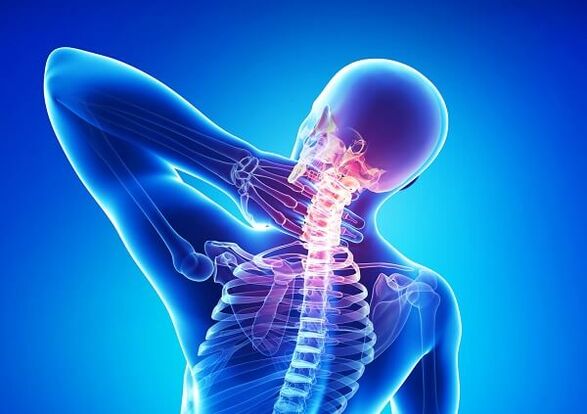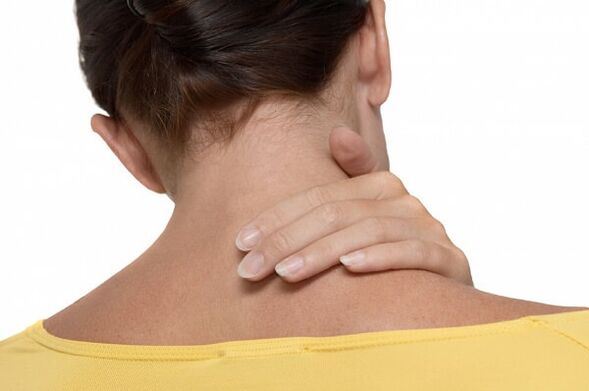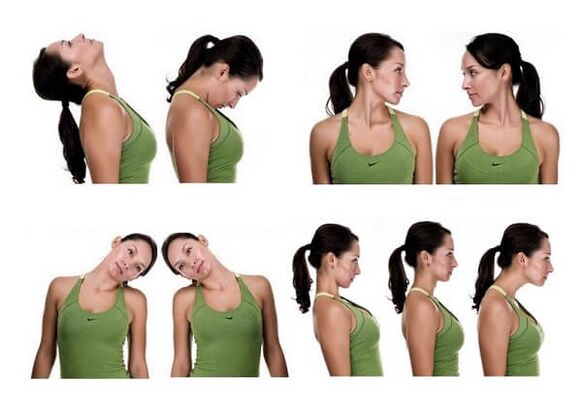
Cervical osteochondrosis can be considered one of the most common pathologies of the spine today. At the same time, according to statistics, it can be noted that more and more young people are sick with this degenerative disease, previously it was believed that osteochondrosis occurs only in older people. It is worth knowing the symptoms of cervical osteochondrosis and home treatment, as the earlier the pathology is detected and therapy started, the less likely it is to develop complications.
Cervical osteochondrosis is a degenerative disease of the cervical spine in which the intervertebral disc is destroyed. The pathology progresses very slowly, but it should be borne in mind that most degenerative changes are irreversible.
Stages of the disease
The following stages of cervical osteochondrosis are differentiated from initial changes, which practically do not cause pain and other symptoms, until complete destruction of the intervertebral disc:
Important!Periodically, disease exacerbations may occur with increased symptoms, usually after greater physical exertion.
The sooner the treatment of the disease starts, the easier it is to get the suspension of the degenerative alterations. At the same time, the clinical manifestations of cervical osteochondrosis differ in their diversity, it is often impossible to diagnose the disease without a complete diagnosis, radiography, MRI or CT scan.
Symptoms
The main difficulty in identifying cervical osteochondrosis is insufficiently expressed and has no obvious symptoms. In addition to the painful syndrome, there are many vegetative symptoms that can speak of diseases of the nervous or circulatory system, therefore, they often come to the identification of osteochondrosis through misdiagnosis.
Autonomic symptoms in men are often considered less severe than pain. Perhaps this is because men are less likely to see a doctor with symptoms of neurological disease. In women, autonomic symptoms associated with the emotional sphere are considered more pronounced.
In general, the following symptoms are generally referred to as the main symptoms of cervical spine osteochondrosis and should all be present at the same time:
These are the main symptoms that occur in cervical osteochondrosis, often the pain syndrome is so weak that the cause of discomfort begins to be sought in the field of neurology.

How to Cure Cervical Osteochondrosis at Home
Home treatment of cervical osteochondrosis is possible in the early stages of the disease. Therapy should be comprehensive, including pain medications, therapeutic exercises, massage, and various other procedures. Every component of therapy is essential for complete recovery.
medicine
Pain relievers are usually needed, starting with non-steroidal over-the-counter medications. If these drugs don't help, they resort to using blocks - injections of anesthetics at the site of the injury.
Topical corticosteroid ointments can also be used. Care must be taken with their use, as if used irrationally, they can cause damage. These funds are strictly prescribed by revenue; its own use is prohibited.
Furthermore, with severe vegetative symptoms, the means can be used to improve the blood supply to the brain. They are prescribed on rare occasions. Sometimes, in addition to them, daytime tranquilizers are used, which help to suppress depressive symptoms resulting from pinching of nerve endings.
Massage
In osteochondrosis, massage of the cervical spine is important as it helps to restore blood circulation, relieve tension in tense muscles. Several different massage techniques are used, self-massage is allowed at home, to do it you need to tilt your head forward in a sitting position, place your hands on your neck on both sides.
Important! In no case should you put pressure on the spine, otherwise the pain syndrome may get worse.
With stroking movements, you need to move from the base of the head to the shoulders, trying to press but not causing pain. The procedure should be continued for 10 to 15 minutes.
Fitness
Exercise for osteochondrosis of the cervical spine is extremely important to maintain muscle tone and mobility in the cervical spine. With this disease, the muscles of the neck must be trained.
The simplest exercise - sitting, you need to place your hands under your chin and press them lightly upwards. At the same time, you need to resist the pressure on your head. The exercise must be performed for fifteen seconds, over time, the duration must be increased.

Diet
With osteochondrosis, it is recommended to start eating more properly, including more fresh vegetables and fruits in the diet. It is also advisable to eat more seafood and fermented dairy products to replenish the amount of substances necessary for the normal functioning of the musculoskeletal system.
Treatment with folk remedies
Folk remedies are not as effective in treating cervical osteochondrosis, but there are some prescriptions that can help treat cervical osteochondrosis. First, several compresses are recommended, one of the most effective is potato-based. Raw potatoes need to be grated, add a spoon of honey, place in a wound, cover with plastic wrap.
Potatoes can be substituted for unleavened dough without yeast. In the absence of inflammation, the compress can be covered with a warm cloth for greater effect. You can also lubricate the cervical region with honey during massage and rub with it, honey provides the best effect.
With a combination of folk remedies and other treatment methods, you can get the best result.

















































